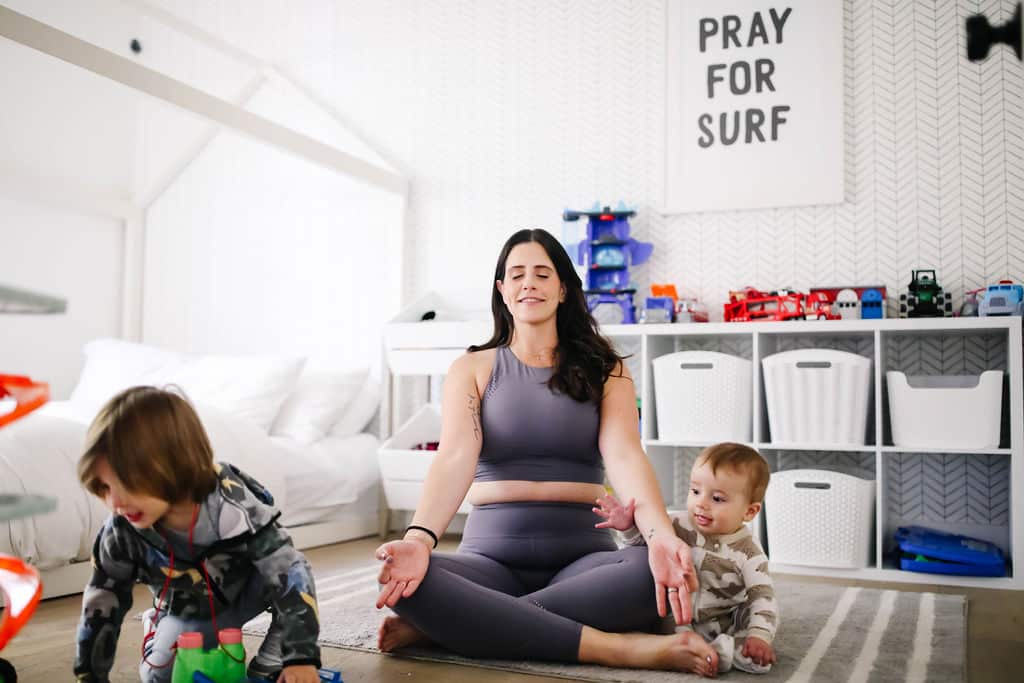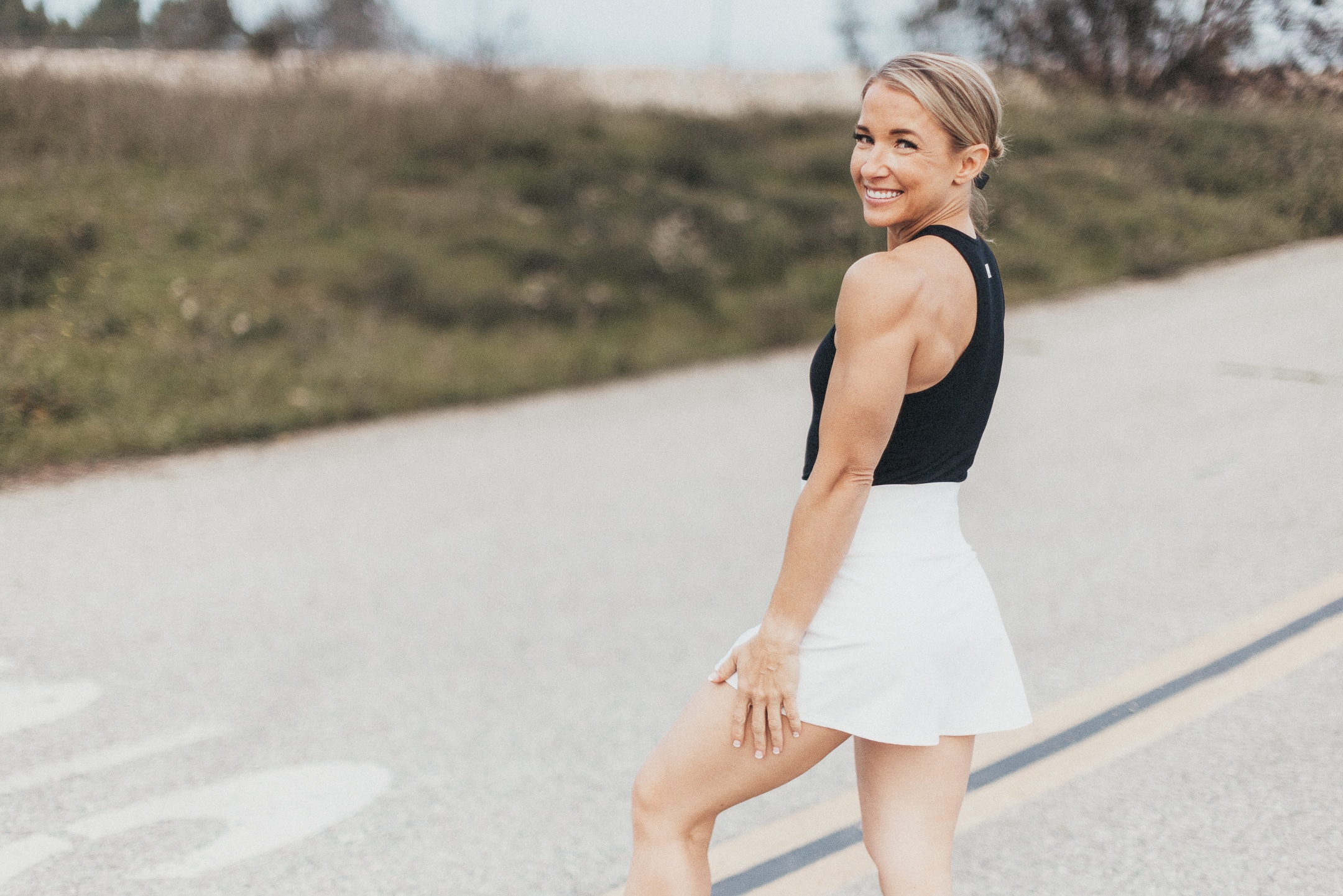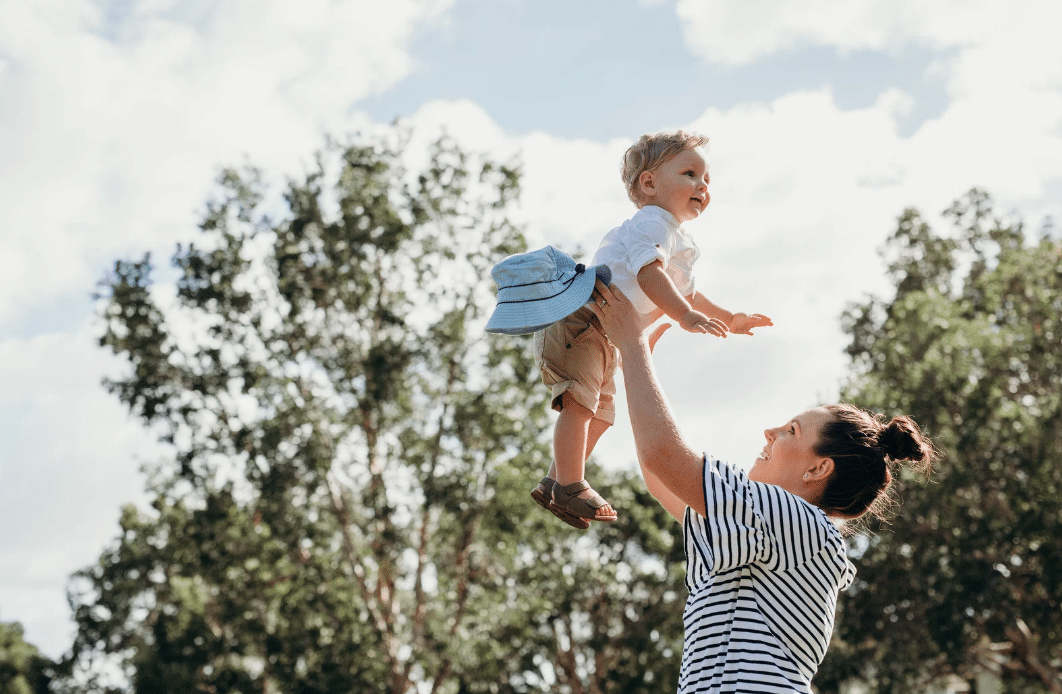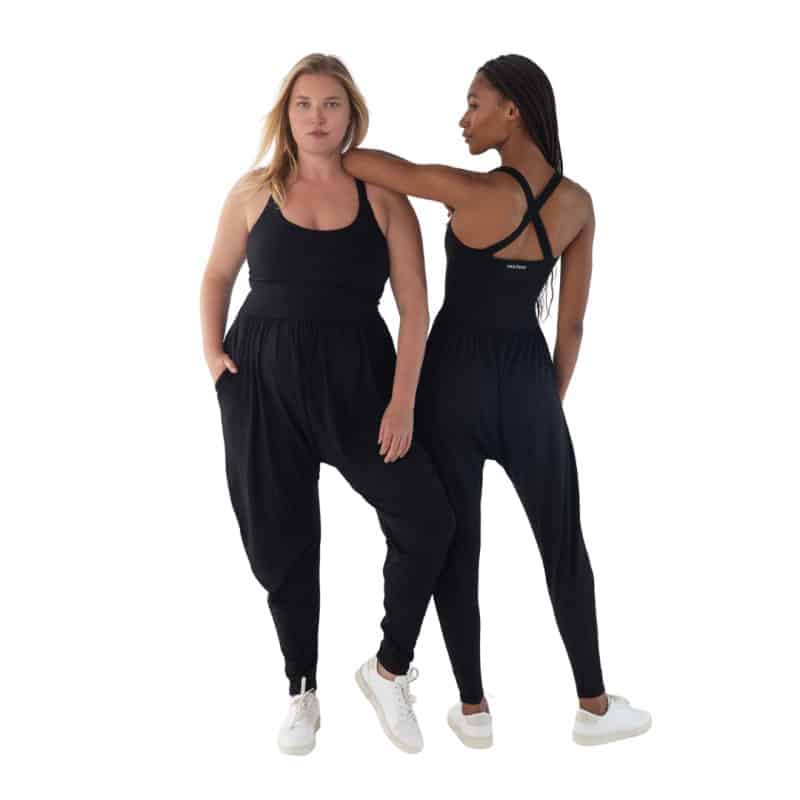We Need Mindful Parenting Now More Than Ever : What It Is + How to Implement It | By Sarah Ezrin
I’ve been struggling to stay present with my kids lately. Yep, me, a long-time yoga teacher and the author of The Yoga of Parenting. I have days where I just can’t seem to focus. You could say this is a unique time. There’s a global conflict distracting my attention and then a family member told me medical news that has the potential to be quite scary. Both of these things have been setting a pall over even the most joyful moments. But let’s be honest. My mind still wanders in the calmest of parenting circumstances. Chasing after two rowdy boys while trying to run a household is by its very nature attention-splitting.
How are parents supposed to stay grounded amidst so much distraction and chaos? For me, the answer has been mindful parenting.
What is Mindful Parenting?
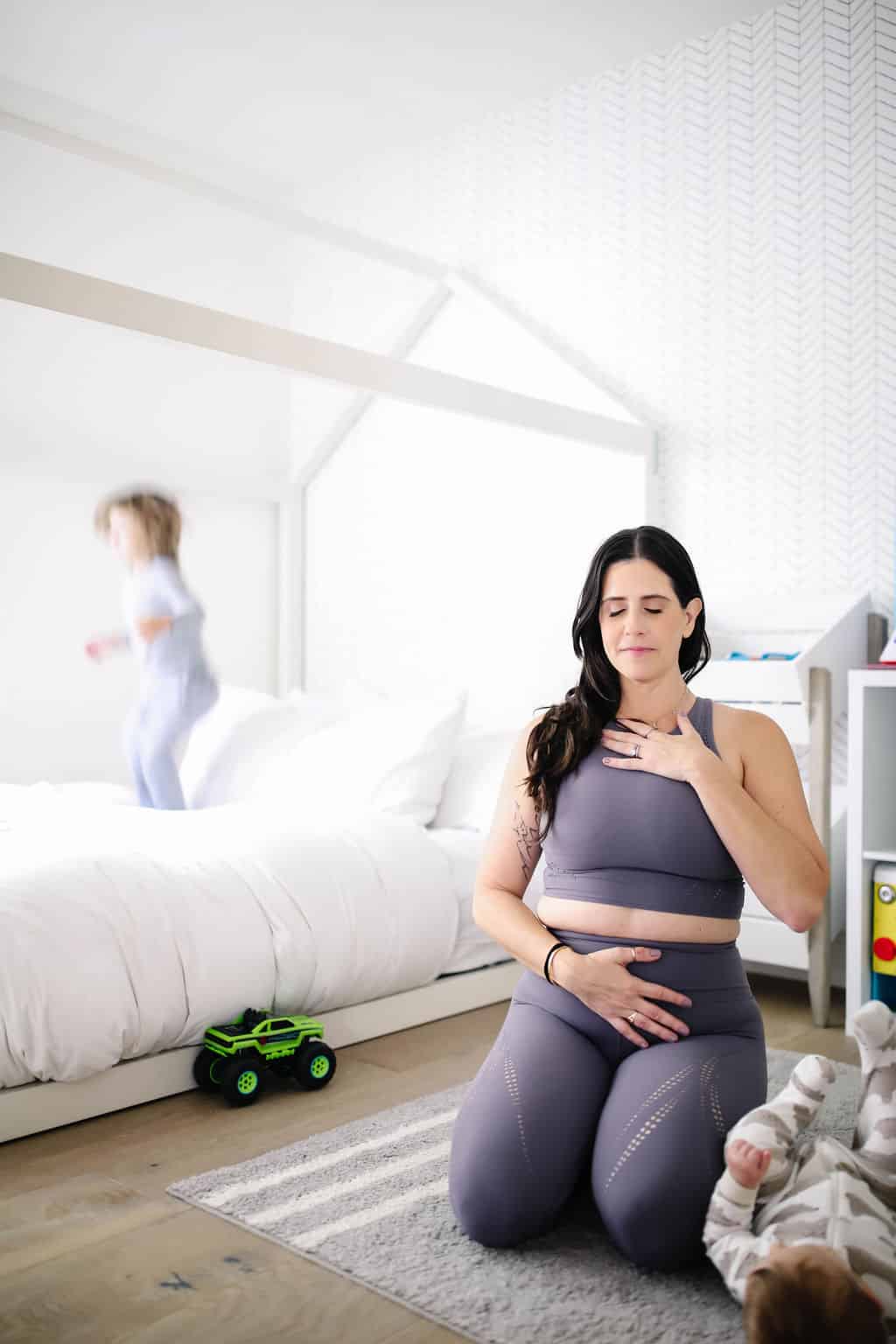
Photos by Emilie Bers.
Mindfulness is the practice of spacious observation. It means being fully present and in tune with whatever person, place or thing you are choosing to focus on. Though people have been meditating since time immemorial, the word “mindfulness” was first used in the English language in the late 1800s. Buddhist scholar Thomas William Rhys Davids translated the Pali word sati to mean ‘mindfulness.’ The term was then popularized in America in the 1970s through meditation teacher Jon Kabat-Zinn’s Mindfulness-Based Stress Reduction (MBSR) program.
Kabat-Zinn defines mindfulness in a 2003 paper as, “The awareness that emerges through paying attention, on purpose, in the present moment and nonjudgmentally to the unfolding of experience moment by moment.” Mindful parenting was born out of Kabat-Zinn’s research as he began to teach people how to apply mindfulness to interpersonal relationships.
For a long time, the term mindful parenting seemed specific to the Buddhist lineage, but as of late, it has become more secular. It’s often used interchangeably with terms like conscious parenting, peaceful parenting, present parenting, and more. The overarching idea is that we seek to be conscious in our interactions with our kids. This goes beyond being attuned to our children and includes being attuned to the world and ourselves. As Dr. Laura Markham, founder of Aha! Parenting and the author of Peaceful Parent, Happy Kids writes, “Most of what we call parenting doesn’t take place between a parent and child but within the parent.” Mindful parenting is the practice of seeing beyond the immediate behavior of the child in front of us (and even beyond the child themselves) to soberly witness what is happening within us and around us.
Mindful parenting excites me because it means I get to bring everything I practice in my favorite place (the yoga mat) to my favorite people (my kids). Yes, I have been distracted lately, but just like when I notice my mind wandering in meditation or during a yoga pose, I can choose to bring it back to the moment. Even if I have to do it over and over again.
Here are two very simple ways you can start implementing mindful parenting with your family:
- See the Bigger Picture
Parenting sometimes feels like I’m trapped in a ditch with my kids. The endless cycles of laundry and lunch preparations. The constant clinging. The sand. So. Much. Sand. When I fixate on the minutiae, I feel confined. I am unable to see my way out of the “hole” (read: bath time, tantrum). My meditation and mindfulness practices give me the wings I need to be able to fly above situations. They enable me to take an aerial view, where before I felt stuck in the mud.
How to: The next time you find yourself triggered or overwhelmed by your family, pause and imagine you could fly above the situation for a moment. Not just the room you’re currently in, but see if you can take into account the time of day, the season of year, what was on your kid’s schedule the days or weeks prior, what may be upcoming, what is happening in you? Have you eaten? How did you sleep? How does your internal response change when you have the whole picture?
Parenting in practice: My four-year-old has been dawdling in the mornings and pretending like he’s forgotten how to get himself dressed. I thought he was just being difficult. Taking an aerial view helped me find understanding. My son is the eldest child and his baby sibling needs a lot of assistance in the morning. Resisting getting dressed is a way for him to get more attention from us, too. Pausing to take in the bigger picture helped change how I now respond. It expanded my heart and allowed me to approach the situation from a more spacious and compassionate lens.
- Try to Breathe Before You Respond and/or After You React
One of the main tenets of mindful parenting is the intention to respond to a situation rather than reacting to it. But how exactly do we do that? Reactions are just that — reactions. They happen quickly and without conscious awareness. It’s because, in stressful parenting moments, our nervous systems think we are in danger and respond accordingly. We either go into action mode, yelling or punishing with time outs (fight or flight), or we shut down and maybe ice our kid out (freeze). The breath is the fastest gateway to returning to calm. It shifts us from states of dysregulation back to balance.
How to: When you notice your child’s behavior is escalating and your heart rate is increasing and you are feeling ready for action, pause and take a deep breath, addressing your own nervous system first, before addressing your child’s behavior. If you’ve already yelled or overreacted, remind yourself that it’s never too late to pause and take a few deep breaths.
Parenting in practice: I was out to lunch with my two kids when my youngest threw my salad all over me, the restaurant, and the lady in the booth next to us. I hadn’t even taken two bites yet. I was overwhelmed as it was trying to wrangle my two hungry kids through the line and into the booth. Then right when we got settled, my littlest started tossing my food around like confetti. I reacted at first, yelling his name to get him to stop, but then as I started cleaning his mess, my mindfulness practice enabled me to sense a window of space. Instead of barreling forward with my rage cleaning, I sat down and took five long deep breaths. My kids were definitely confused, but they began to settle down too. Then we laughed. Oh, and I ate their food.
Modeling Mindfulness
The goal of mindful parenting isn’t to always be Buddha-like and calm. You will get mad, you will shut down. We are human beings with nervous systems! What mindful parenting provides is choice. It creates space and awareness, so we’re not just being thrown around by this life, reacting. We can choose where to place our attention and we can choose how to respond. Mindful parenting is also a great introduction to mindfulness for our kids! Explain what it feels like in your body when you get dysregulated and share the tools that work to settle you back down.
Sarah Ezrin
Yoga Educator, Content Creator, Mama + Award-Winning Author of The Yoga of Parenting
IMBODHI products are top-notch. Soft to the touch, hand-sewn and made of sustainably sourced fabrics. With a [...]

Subscribe to Our Tribe
Stay up to date with Y+L News, Events and special announcements.





